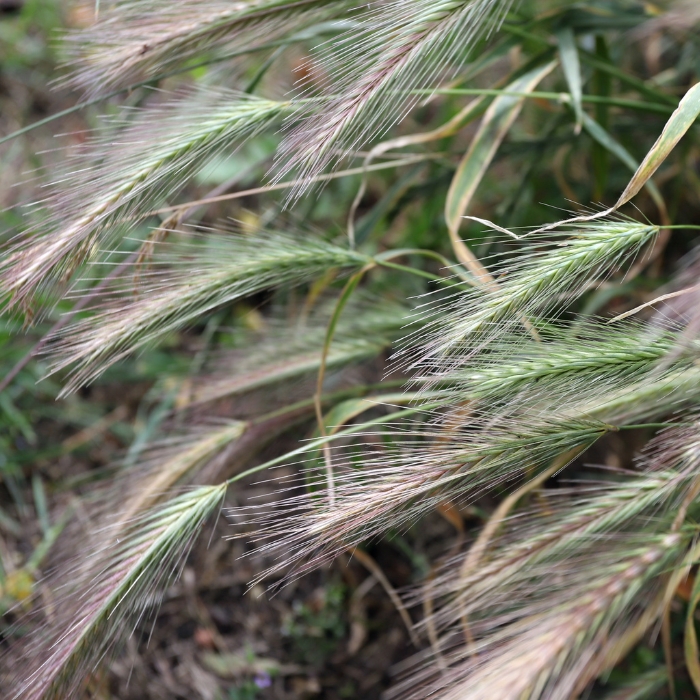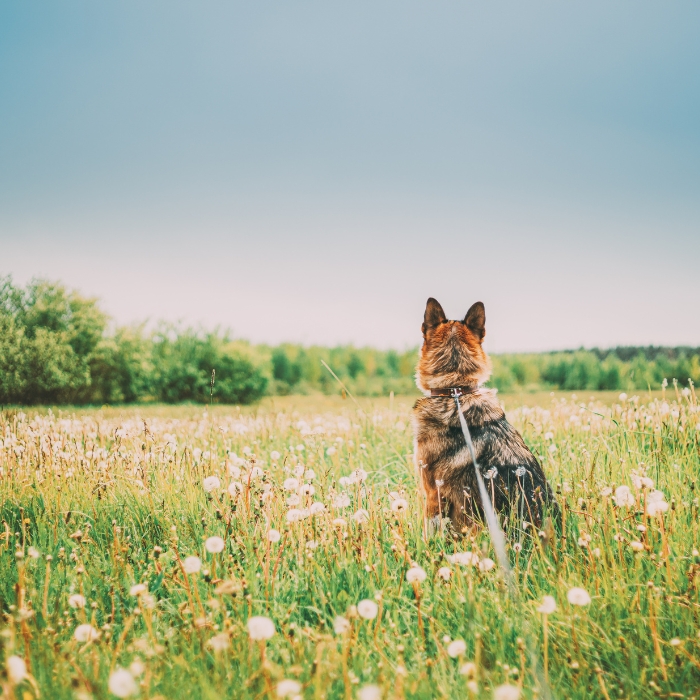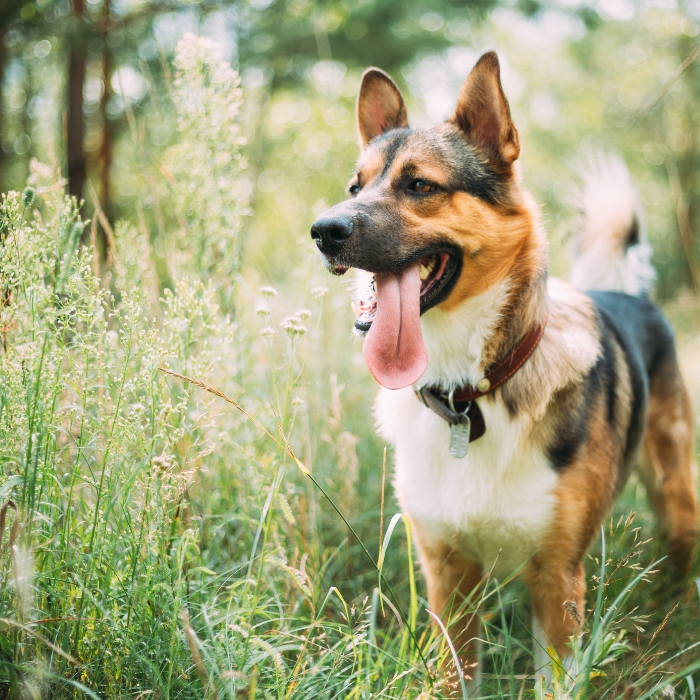
Grass Awn: A Tiny Enemy on Summer Walks
One of the sneaky dangers of the summer and autumn months that every dog owner should be aware of is the grass awn. This seemingly harmless tiny grass seed is made dangerous by its special shape. With its sharp, hooked tip, it easily burrows under the dog’s skin or into body openings, causing severe pain and inflammation. Let’s take a closer look at what a grass awn is, why it is dangerous, how to prevent the related discomfort, and what to do if your dog gets a grass awn embedded in its body!
What is a grass awn?
A grass awn is the dried, small seed of a weed called wall barley (Hordeum murinum). During the hot summer months, the plant and its awns dry out, and the sharp, hooked awn parts break off and can latch onto a dog’s fur, paws, or even body openings. Because the seeds have an elongated, arrow-like shape with a hooked end, they can easily penetrate soft tissues. Due to the hook, however, they cannot retreat and instead burrow deeper and deeper.

Why is a grass awn dangerous?
Once dried, the grass awn becomes hard and, due to its shape, is capable of piercing the dog’s skin and entering between the toes, inside the ear, around the eyes, and even being inhaled while sniffing, thus entering the nasal passages or respiratory tract. Under the skin, the grass awn can migrate for weeks, causing inflammation, infection, and tissue damage. This naturally results in significant pain and compulsive behaviors such as licking paws, shaking the head, or scratching.
Because the grass awn moves in only one direction, it can burrow very deeply and even reach internal organs, potentially leading to serious, life-threatening conditions. For example, if it reaches the airways or lungs, it can cause breathing difficulties and pneumonia.
Where are grass awns most commonly encountered?
Wall barley is a widespread plant, so grass awns can be found almost anywhere there is grassy terrain—natural meadows, forest edges, parks, gardens, or even urban green areas. Grass awns become especially dangerous during the summer months when plants dry out and awns easily break off, spreading by wind, animals, or human movement.
The period from early spring to late autumn is the most hazardous, as mature, dried plant parts are present in nature. Particularly in June, July, and August—when most grasses and weeds dry out—grass awns are abundant.
Grass awns most frequently get caught between a dog’s paw pads and toes, where the fur is dense and the skin folds, allowing the hooked seed to lodge easily. They also often enter the inside of the ears, especially in dogs with long, floppy ears.
It is not uncommon for grass awns to get around the eyes or into other body openings (nostrils, mouth, genital area), for example when a dog is sniffing or rooting around in the grass.

What symptoms might indicate the presence of grass awns?
Unfortunately, grass awns often go unnoticed, especially at first, because the tiny foreign body hides under the skin or deep within body openings. However, it is important for owners to recognize possible symptoms to seek veterinary care promptly.
- Paw issues: If a grass awn penetrates the paw, the dog will often start licking or chewing between the toes due to pain or itching. This may be accompanied by swelling, redness, and discharge. The dog may limp due to swelling or pain.
- Ear problems: Grass awns in the ear canal cause intense discomfort and inflammation. The dog may compulsively shake its head, tilt it to one side, try to scratch or bite the ear. The ear may have a foul odor, discharge, or even bleeding.
- Nasal issues: If a grass awn gets into the nostrils, sudden and intense sneezing fits, snorting, and nose rubbing can occur. Discharge from the affected nostril may develop and become purulent over time.
- Eye problems: Grass awns near the eyes cause immediate discomfort due to the sensitivity of this area. The dog may squint, rub the eye with its paw or against grass, show signs of conjunctivitis, redness, and discharge. If not removed quickly, severe corneal damage may develop.
- Behavioral signs: Due to the irritation caused by the foreign body, behavioral changes such as compulsive scratching, licking, limping, or loss of balance may be observed. These signs indicate that something is wrong and veterinary examination is necessary.
How to protect your dog against grass awns?
Completely avoiding grass awns is nearly impossible, but prevention and quick action are key:
- After walks, thoroughly check your dog’s coat, especially paws, between the toes, ears, and body openings!
- For long-haired dogs, trimming the fur around the paws and ears can reduce the chances of grass awn attachment.
- During grass awn season, regularly comb or brush your dog’s coat to remove any lodged seeds.
- Special dog socks or paw protectors can prevent direct contact between grass awns and the paws/toes. Dog boots also protect paws on hot surfaces such as asphalt.
- Pay attention to your dog’s behavior during and after walks! If it licks or chews its paws, scratches, shakes its head, or squints, irritation from grass awns may be present. Do not delay veterinary examination—early intervention can spare your pet serious injury. If swelling, discharge, or pain is noticed, seek veterinary care immediately.

The importance of veterinary treatment
Removing grass awns often requires significant intervention. Subcutaneous foreign bodies are extracted with special forceps or minor surgery. If the grass awn is in the ear, sedation is usually necessary due to pain and discomfort. Grass awns in the nasal passages or airways may require endoscopic examination and removal.
Important: Never attempt to remove grass awns at home as this may push them deeper or leave parts inside! Timely diagnosis and treatment minimize pain, inflammation, and complications, so vigilance is essential for dog owners.
Helpful tip for ear infections
If your dog develops an ear infection caused by grass awns, reducing inflammation and preventing infection is crucial. Anti-inflammatory, antimicrobial herbal preparations such as Otosaf ear drops—with natural ingredients—can help relieve pain and support ear healing. Always use such products alongside appropriate veterinary treatment and consult your vet before administering any medicinal products!
